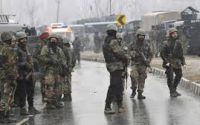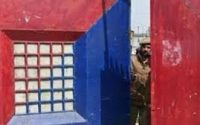$100 Website Offer
Get your personal website + domain for just $100.
Limited Time Offer!
Claim Your Website NowWhat took BJP so long to expel Sengar? Hint: Votes
Source: indiatoday.in
Rape accused MLA Kuldeep Sengar has finally been expelled from the BJP. He had been booked by the CBI over his alleged involvement in the accident of the Unnao rape survivor that happened on Sunday, July 29.
Sengar, who is an MLA from Bangarmau assembly of Unnao district in Uttar Pradesh was arrested by the CBI on August 13 after he was booked under four sections of Indian Penal Code (IPC) and Protection of Children against Sexual Offences (POCSO) act. He has been in jail since then.
On Sunday, the Unnao rape survivor, along with her two aunts and lawyer, was traveling to Raebareli when a truck, coming from the wrong side with its number plate blackened, hit their car resulting in the death of both her aunts. Though she survived the crash, her condition is critical.
The accident had shocked the country but the BJP remained mum on it for days, and no senior leader spoke against Sengar. Neither did CM Yogi Adityanath utter a word about it, nor did senior BJP leaders like Sakshi Maharaj, the MP from Unnao. Most notable was the silence of women BJP leaders especially Smriti Irani who is the Minister of Women and Child Development Ministry.
Why was the BJP silent?
The India Today Data Intelligence Unit analysed the political performance of the jailed MLA and found out that along with being a frequent turncoat, Sengar has a powerful and loyal vote bank. Not just that, in the past 17 years, Sengar has also been able to increase the percentage of votes he secured from the seats he contested.
Sengar has contested the UP legislative assembly elections from Unnao region four times on three different party tickets, and has won every time.
In 2002, he was BSP’s contestant from Unnao seat and won, though he secured hardly 24 percent votes. Five years later, he contested on a Samajwadi Party ticket from Bhangarmau, and won by securing 28 percent votes.
In 2012, he once again got a ticket from the Samajwadi Party to contest from Bhagwantnagar constituency. This time, his vote percentage jumped to 33 percent.
But in 2017, he turned turncoat and joined the BJP. He contested the Assembly election from Bangarmau seat, and won again, by securing 43 percent of the votes polled.
Sengar’s Unnao stronghold
Not only has Sengar been able to increase his vote percentage steadily, his frequent switches have helped him to erode the competition in Unnao region.
To measure the competition, the DIU took the Effective Number of Parties (ENOP) values of the constituencies Sengar contested from. ENOP is derived from vote shares of each
candidate in a constituency and is calculated by using a mathematical formula. We have taken the ENOP values from Ashoka University’s Trivedi Centre for Political Data’s Lokdhaba application.
The ENOP value for Unnao 2002 assembly election was 5.26 which means that there were more than 5 strong parties fighting the election on the seat.
But in 2007 assembly election, the ENOP value for Bangarmau (where Sengar contested from) was 5. This value has been decreasing, showing that competition against Sengar has been declining.
The ENOP for Bhagwantnagar in 2012 assembly election was 4.5 and for Bhangarmau in 2017 assembly polls, it was 3.03. This means that, effectively, only three parties contested the election.
Neighbourhood effect
Had it been for only one seat, Sengar wouldn’t have been too important for the BJP. However, the DIU found out that the neighbouring constituencies of the seats from where Sengar contested also voted for the same party that he had switched to.
Unnao Lok Sabha has 6 assembly segments – Unnao, Banagarmau, Bhagwantnagar, Purwa, Safipur and Mohan.
Mohan assembly was created in 2012 following the delimitation, so data is available only since then.
In 2002, when Sengar contested on a BSP ticket, three of the five assembly seats in Unnao had voted for BSP. Five years later, when Sengar contested the assembly election on a Samajwadi Party ticket, four of the five assembly seats went in SP’s kitty.
In 2012, Sengar was the SP candidate again, and this time too, his party won five of the six assembly seats in Unnao.
This could have been one of the reasons why the BJP was keen to get Sengar to join its ranks. From 2002 to 2012, the BJP hadn’t won a single assembly seat in Unnao. However, in 2017 when Sengar contested on a BJP ticket, the party won all the six seats.
Because of his powerful presence in the region, the BJP seemed to have been wary of losing its newly-found stronghold in Unnao. This could be one of the reasons why Sakshi Maharaj, who won easily from Unnao in the 2019 Lok Sabha election, had visited him last month in Sitapur jail, even though it had later created a controversy.
“He is lodged in the jail for a long time. Sengar is one of the most popular lawmakers so I came to thank him after the elections,” Sakshi Maharaj had told the reporters.
But perhaps now, Sengar has become a millstone that could weigh BJP down, which is why days after the accident, the party seems to have grudgingly expelled him.



